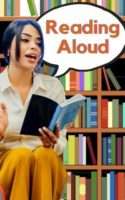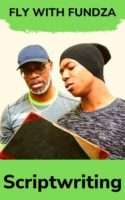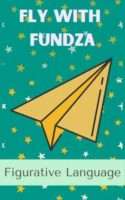Literacy in South African schools is in crisis. Researchers discover that our learners’ reading and writing abilities are far lower than the international norm. How can we teach learners to improve their writing skills?
One important way is to get learners to write more. Like anything, writing improves with practice, by doing it regularly. However in many South African classrooms around the country, very little writing gets done. One researcher asked some schools for their learners’ grade 8 English exercise books in June so he could analyse them. There were only three pages of writing.
Researchers also point out that in primary schools learners spend much time filling in words in worksheets, or filling in missing letters or selecting the correct answers. However they do not spend much time actually writing whole original sentences themselves.
Learners at primary and high school are not doing enough writing to develop their writing ‘muscles’ – not the muscles in their hands, but the muscles in their brains!
Even at schools where more writing does happen, the problem remains that learners often see writing as just something they have to do to get marked, not as a form of thinking and communication. Often when they are asked to write an essay, they will count the words, focusing on getting the right total rather than on the meaning and ideas that they want to share.
This is because as teachers we have taught writing as a decontextualised skill, a chore that has to be completed, and not something that communicates meaning. This practice writing is obviously better than no writing done at all, but it is still limited in what it achieves, because learners write to get the task over with, rather than learning how to use it to extend and develop their own thinking and understanding.
‘Real’ writing – that is, writing that is done in the real world, is always a form of communication. It has a purpose – to inform, express, entertain, shock – and this purpose determines the kind of writing we do. A text message to our friend looks very different from a job application, or a short story. So when we teach writing, we need to focus on what the writing is for, as that will help with choices about how to shape it.
The curriculum has tried to reflect this with the range of ‘transactional texts’ prescribed to be taught, where learners are expected to understand the particular requirements of the different genres. But again, because these posters/emails/adverts that learners write are only read by their teachers, again it becomes an artificial process, and learners are just following a tickbox of requirements rather than truly thinking about who they are writing for and why. And in fact, the truth is that they are writing for their teacher – and no-one else!
With big classes, many teachers feel horror at the idea of setting more writing topics – that’s 50 more essays to mark now! It is perhaps not surprising that there is so little extended writing in learners’ books, as teachers focus only on portfolio tasks, as otherwise the burden of marking would become much heavier than it already is.
But writing does not always have to be read by the teacher. Writing can be shared with peers, or even just done to communicate with oneself, to be a record of thoughts and feelings. Writing is a way of formulating and clarifying thoughts. And the more you write – and write to express meaning – the better you get at it. So we need to persuade learners that even when it isn’t ‘for marks’ that it is worth doing.
Recently there has been more focus on rubrics – on helping learners understand why they received the results they did, so they understand the marking process. But there has been little focus on teaching the process of writing. Some marks are given to evidence of ‘planning’. However this has just become a tickbox requirement, and it is hard to change beliefs through changing behaviour. I remember invigilating an essay exam which my colleague had set. She gave 5 marks to learners for a ‘mind map’ as evidence of their planning. As I walked around I saw many of them drawing their mind maps after they had finished their essays, as for them it was just a way to score 5 marks. So what this teaches, perhaps, is the importance of sharing the concept of planning, discussing its importance, rather than just imposing it as a requirement.
No serious writer doesn’t go over his or her work, correcting, editing, making it better. The first draft is for the ideas, then later the ideas will need shaping. For writing is in many ways like thinking, and as you think deeply about a topic you often get new ideas and directions that then suggest a whole new shape for the piece of writing.
It is at the final editing stage that learners need to be aware of the language and grammar rules they have been taught. But sadly often these grammar and language lessons are used only to prepare for grammar and language tests, and learners do not use their knowledge to edit their own work. And even if diligent teachers correct all the mistakes in the essays (another time consuming process), how many learners look at all the red marks and think, ‘Wonderful, how much I can learn from this’ instead of, ‘I don’t want to LOOK at this page so full of red.” In the ‘real’ world of writing, once editors have commented then writers rework their texts, and the final version remains clean for readers to respond to in their own ways.
Another problem, I believe, is the separation between reading and writing. Often examples of good writing are excellent ways of stimulating learners. How will learners know what good writing is if they never read it? We are not born knowing what an essay looks like, or how to write a CV – or how to write a good story. So why do we expect our learners to be able to do write these if they have never read any? The more different good examples they get to read, and think about, the more they will be able to draw on when it comes to their own writing. Students need to be encouraged to ‘read like a writer’ – that is, to notice how writers have structured their arguments, presented their stories, so that students can then use these techniques in their own pieces.
As a teacher, I never felt I taught writing really well. I would do it as the curriculum required – the different genres of writing – essay, directions, etc – and then do my best to help learners plan, and then later edit, their work. But it was only read by me, and it was taught in such a ‘bitty’ way that I was not always sure what had been learned by my students.
So I was interested in an approach an American colleague introduced – the Writing Workshop, where a whole two weeks or so is all about producing a text step by step. Together the learners discuss, comment and support each other’s work. At the end of the two weeks teachers and parents were invited in to read the finished stories about family that were beautifully exhibited in the classroom. So writing was taught as a careful process, with collaboration and sharing, and with the final product being read by many.
Perhaps we can adopt more of this in our approach to teaching writing in our South African classrooms. The Writing Workshop runs writing workshops for teachers, so that they grapple with decisions and editing processes that they can then share in a meaningful way with their learners. We need to develop teachers as writers and readers themselves, before they are asked to teach these skills to their learners.





